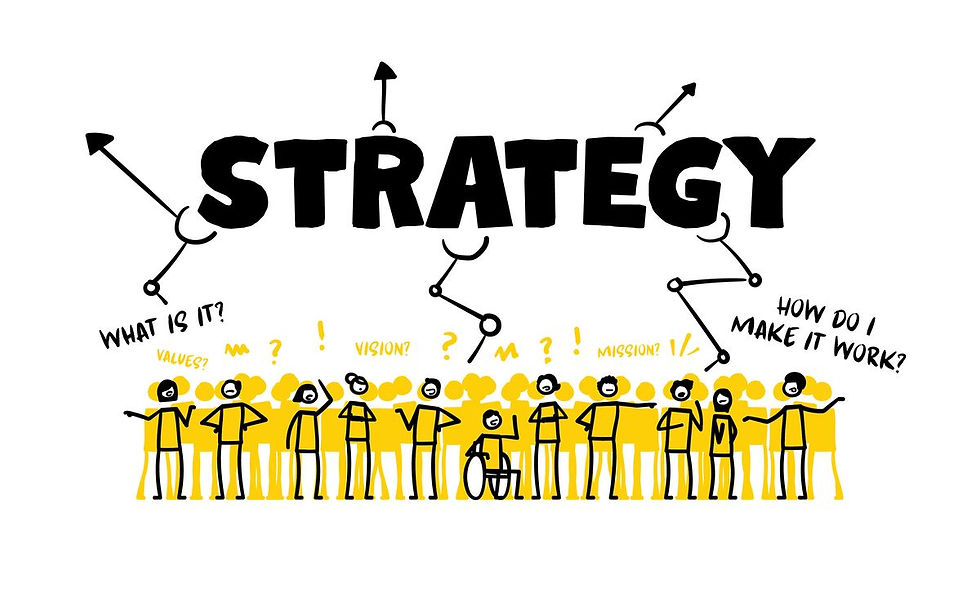Lessons from Big Brand Transformations
- Crsndo.
- Oct 25
- 3 min read
What small businesses can learn from the world’s boldest rebrands.
When global brands reinvent themselves, they do more than change a logo. They recalibrate perception, rebuild trust, and often unlock entirely new markets. The most successful rebrands reveal principles that small businesses can apply at a fraction of the cost — strategy before design, clarity before creativity, and consistency before growth.
According to Deloitte’s Global Brand Relevance Study 2025, brands that restructured their identity systems after a clear strategy phase saw 32 percent higher customer retention within two years. The lesson is simple: transformation succeeds when rooted in substance, not style.
Brand transformations are no longer cosmetic; they are structural.
Rebranding used to mean updating visuals or slogans. Today it signals strategic reinvention. McKinsey’s State of Brand 2024 found that 78 percent of successful rebrands began with a diagnostic audit covering customer sentiment, digital performance, and internal alignment.
The drivers behind modern transformations are also changing. PwC reports that 61 percent of global rebrands are now triggered by shifts in customer behaviour, not competition. Businesses respond to falling trust, digital fatigue, or market misalignment rather than external pressure.
Case evidence supports this. Airbnb, Burberry, and Pepsi each rebuilt not only their design language but their brand systems. After its 2023 rebrand, Pepsi increased unaided awareness by 17 percent and social engagement by 45 percent, according to its internal brand tracker.
Simplified pattern: Modern transformations succeed when they begin with evidence, align with purpose, and end in clarity.
Three universal lessons from major rebrands that apply to every business.
a. Strategy before style
The biggest mistake small businesses make is jumping straight to design. Global brands do the opposite. They build new visual identities on top of data and narrative frameworks. According to Bain & Company’s Brand Playbook 2025, brands that clarified audience segmentation and value propositions before creative rollout achieved two times faster market adoption.
Implication: Before refreshing design, audit your message, positioning, and internal alignment. Redesigning without redefining wastes resources and confuses audiences.
b. Simplicity outperforms complexity
The most valuable brands are reducing noise. Burberry’s 2023 transformation reintroduced warmth and heritage with simplified visuals and a clear human story. Its organic search visibility rose by 29 percent within six months (Similarweb, 2024).
Apple, Mastercard, and Nokia demonstrate the same principle: visual simplicity increases recognition, which builds memory and trust. According to Kantar’s Meaningful Brands Report 2024, brands with consistent and minimal design systems score 31 percent higher on trust metrics.
c. Internal culture drives external success
No rebrand sustains impact unless employees believe it. Airbnb’s 2014 and 2024 transformations both began with internal immersion programs. McKinsey found that companies aligning brand values with employee behaviours deliver 3.2 times higher shareholder returns over five years.
Implication: The most effective transformations align teams before campaigns. For SMEs, this means explaining not just what is changing, but why.
How to translate big-brand transformation lessons into practical small-business action.
Start with a diagnostic brand audit
Evaluate how customers perceive your business versus how you describe it.
Analyse performance data: website traffic, conversion rates, and social engagement.
Identify inconsistencies across tone, visuals, and user experience.
Define the strategic blueprint
Articulate what you want the rebrand to achieve: credibility, clarity, or repositioning.
Build a value proposition supported by customer research.
Only then brief design or marketing partners.
Design for consistency and scalability
Create a unified brand system covering logo, colours, typography, tone, and imagery.
Document usage rules to maintain quality.
Implement brand governance — review every asset for alignment with your new direction.
According to PwC’s Brand Reinvention Index 2024, companies that linked rebrand objectives to measurable performance metrics (such as conversion rates or retention) achieved 35 percent stronger ROI than those treating branding as a creative refresh.
Superficial transformations often cost more than inaction.
Inconsistent storytelling confuses audiences and dilutes marketing spend.
Design without strategy creates short-term attention but long-term brand erosion.
Neglecting employee alignment undermines authenticity.
EY’s Global Brand Maturity Report 2024 warns that 43 percent of failed rebrands stemmed from internal misalignment between leadership and execution teams. Without clear communication, new visuals fail to shift perception.




Comments